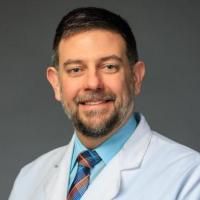Structured mentorship program for the ABR international medical graduates alternate pathway for medical physicists in diagnostic imaging.
Date
2021-01-09
Journal Title
Journal ISSN
Volume Title
Repository Usage Stats
views
downloads
Citation Stats
Attention Stats
Abstract
Type
Department
Description
Provenance
Subjects
Citation
Permalink
Published Version (Please cite this version)
Publication Info
Ria, Francesco, Joshua M Wilson, Jeffrey Nelson and Ehsan Samei (2021). Structured mentorship program for the ABR international medical graduates alternate pathway for medical physicists in diagnostic imaging. Journal of applied clinical medical physics. 10.1002/acm2.13166 Retrieved from https://hdl.handle.net/10161/22037.
This is constructed from limited available data and may be imprecise. To cite this article, please review & use the official citation provided by the journal.
Collections
Scholars@Duke

Francesco Ria
Dr. Francesco Ria is a medical physicist and he serves as an Assistant Professor in the Department of Radiology. Francesco has an extensive expertise in the assessment of procedure performances in radiology. In particular, his research activities focus on the simultaneous evaluation of radiation dose and image quality in vivo in computed tomography providing a comprehensive evaluation of radiological exams. Moreover, Francesco is developing and investigating novel mathematical models that, uniquely in the radiology field, can incorporate a comprehensive and quantitative risk-to-benefit assessment of the procedures; he is continuing to apply his expertise towards the definition of new patient specific risk metrics, and in the assessment of image quality in vivo also using state-of-the-art imaging technology, such as photon counting computed tomography scanners, and machine learning reconstruction algorithms.
Dr. Ria is a member of the American Association of Physicists in Medicine (AAPM) task group 392 (Investigation and Quality Control of Automatic Exposure Control System in CT), of the AAPM task group 430 (Comprehensive quantification and dissemination of patient-model-based organ and effective dose estimations and their associated uncertainties for CT examinations), of the AAPM Medicine Public Education working group (WGATE), and of the Italian Association of Medical Physics task group Dose Monitoring in Diagnostic Imaging.

Joshua Wilson

Jeffrey Nelson

Ehsan Samei
Dr. Ehsan Samei, PhD, DABR, FAAPM, FSPIE, FAIMBE, FIOMP, FACR is a Persian-American medical physicist. He is the Reed and Martha Rice Distinguished Professor of Radiology, and Professor of Medical Physics, Biomedical Engineering, Physics, and Electrical and Computer Engineering at Duke University. He serves as the Chief Imaging Physicist for Duke University Health System, the Director of the Carl E Ravin Advanced Imaging Laboratories and the Center for Virtual Imaging Trials (CVIT), and co-PI of one the five Centers of Excellence in Regulatory Science and Innovation (CERSI), Triangle CERSI. He is certified by the American Board of Radiology, recognized as a Distinguished Investigator by the Academy of Radiology Research, and awarded Fellow by five professional organization. He founded/co-founded the Duke Medical Physics Program, the Duke Imaging Physics Residency Program, the Duke Clinical Imaging Physics Group, the Center for Virtual Imaging Trials, and the Society of Directors of Academic Medical Physics Programs (SDAMPP). He has held senior leadership positions in the AAPM, SPIE, SDAMPP, and RSNA, including election to the presidency of the SEAAPM (2010-2011), SDAMPP (2011), and AAPM (2023).
Dr. Samei's scientific expertise include x-ray imaging, theoretical imaging models, simulation methods, and experimental techniques in medical image formation, quantification, and perception. His research aims to bridge the gap between scientific scholarship and clinical practice, in the meaningful realization of translational research, and in clinical processes that are informed by scientific evidence. He has advanced image quality and safety metrics and radiometrics that are clinically relevant and that can be used to design, optimize, and monitor interpretive and quantitative performance of imaging techniques. These have been implemented in advanced imaging performance characterization, procedural optimization, and clinical dose and quality analytics. His most recent research interests have been virtual clinical trial across a broad spectrum of oncologic, pulmonary, cardiac, and vascular diseases, and developing methodological advances that provide smart fusions of principle-informed and AI-based, data-informed approaches to scientific inquiry.
Dr. Samei has mentored over 140 trainees (graduate and postgraduate). He has more than 1400 scientific publications including more than 360 referred journal articles, 600 conference presentations, and 4 books. Citations to his work is reflected in an h-index of 74 and a Weighted Relative Citation Ratio of 613. His laboratory of over 20 researchers has been supported continuously over two decades by 44 extramural grants, culminating in a NIH Program Project grant in 2021 to establish the national Center for Virtual Imaging Trials (CVIT), joining a small number of prominent Biomedical Technology Research Centers across the nation. In 2023, he, along with 3 other PIs, was awarded to lead one of five national Centers of Excellence in Regulatory Science and Innovation (Triangle CERSI) by the FDA.
Unless otherwise indicated, scholarly articles published by Duke faculty members are made available here with a CC-BY-NC (Creative Commons Attribution Non-Commercial) license, as enabled by the Duke Open Access Policy. If you wish to use the materials in ways not already permitted under CC-BY-NC, please consult the copyright owner. Other materials are made available here through the author’s grant of a non-exclusive license to make their work openly accessible.
